Key Differences One major benefit of unsecured loans is their minimization of any personal risk and absence of collateral. If your financial circumstances call for flexibility and no risk, unsecured loans could be perfect. Usually faster and with shorter processing timeframes, loan applications help you to get the necessary money rapidly. Flexible and catering to different financial circumstances, the repayment terms and amounts are based on credit history, debt-to-income ratios, and consistent income sources. Unsecured loans may also have more demanding approval criteria.
Table of Notes
Important learnings: UnsecuredKey Differences Revealed: Unsecured Loans vs. Secured Loans by Maximilian loans are more easily available and reduce the risk for individuals who borrow, as they do not call for any kind of security. Usually, with lower interest rates, secured loans demand collateral to function as a guarantee, therefore increasing the risk for the borrower. Understanding the differences helps you to choose the best loan for your particular financial situation. Secured Versus Unsecured Loans
Knowing the kind of loan
Knowing the kind of loan you want becomes vital when you need one. Both unsecured and secured loans have different advantages, features, and possible concerns. Making a smart choice calls for evaluating your ambitions and financial circumstances. One major benefit of unsecured loans is their minimization of any personal risk and absence of collateral. If your financial circumstances call for flexibility and no risk, unsecured loans could be perfect.
Definition of Unsecured Loans
Key Differences Unsecured loans are forms of financing whereby borrowers are not required to show collateral, a major asset like a car or property, to support the loan. Since no collateral is required, unsecured loans usually offer less documentation and faster approval times. Loan eligibility depends on the credit profile of the borrower, hence, your financial behaviour is essential to guarantee them. Personal loans, credit cards, and school loans are among the examples of unsecured loans.
Many consumers find unsecured
Many consumers find unsecured loans appealing because of their simplicity and lack of related dangers. If reducing personal risk is crucial, one could want to give unsecured loans some thought. Discover more about lenders such as MaxLend loans, one instance of an entity providing easily available financial goods like these. For people looking for immediate financial help, unsecured loans give peace of mind free from collateral and a simple application process. For borrowers with different financial demands, their emphasis on consumer ease and flexible terms helps them to be a reliable alternative.
What are secured loans?
Key DifferencesOn the other hand, secured loans call for borrowers to provide the lending agreement’s collateral—an asset. This collateral protects the lender and guarantees loan payback via regular payments or collateral value should the borrower fail to pay back. Sometimes this security results in lowered interest rates and higher loan limits. Typical secured loans are mortgages and auto loans, in which case the funded asset usually serves as collateral. If you have an asset of value you are willing to commit as security, secured loans may appeal. Still, one should be aware of the possible risks connected to secured loans.
Unsecured Loans: Benefits and Drawbacks
Unsecured loans have certain benefits. These loans are more reachable and less anxiety-inducing since they do not demand collateral, hence they naturally provide less risk to borrowers. Usually faster and with shorter processing timeframes, loan applications help you to get the necessary money rapidly. Flexible and catering to different financial circumstances, the repayment terms and amounts are also. Unsecured loans could, however, potentially have certain negative effects. Because collateral is absent, these loans can have higher interest rates than their secured equivalents. Reducing personal risk comes at a trade-off, in this a higher expense.
Stressing credit history,
Stressing credit history, debt-to-income ratios, and consistent income sources, unsecured loans may also have more demanding approval criteria. Ignoring loan obligations could cause the asset under collateral to be lost. Before applying for a secured loan, have a strong payback plan to help you avoid this risk.
Advantages and disadvantages of secured loans. Given their lower risk to lenders resulting from collateral involvement, secured loans have lower interest rates. For major purchases like purchasing a house or a new car, these loans are therefore especially favourable since they allow access to bigger loan amounts and come with longer repayment terms.
Secured loans carry an inherent
Secured loans carry an inherent risk of losing the collateralised asset in the event of payment default, notwithstanding these advantages. This makes careful repayment management more difficult since late payments could lead to asset forfeiture. Borrowers also have to handle extra collateral evaluation or registration fees, which raise starting borrowing rates.
Factors Affecting Loan Type Selection
Key Differences: Whether you choose a secured or unsecured loan calls for careful review of your risk tolerance, financial status, and objectives. You have to balance elements, including your credit profile, loan goal, interest rates, loan terms, and related hazards. An unsecured loan can better fit your particular tastes and demands if reducing risk is your top concern and you want a streamlined lending process.
On the other hand, if you want a larger loan with maybe reduced interest rates and have a valuable asset to give as collateral, a secured loan could show benefits. In the end, knowing your financial goals and limitations will help you choose the loan type most fits your needs.
Finally, empower your financial path.
Key Differences Regarding financing, unsecured as well as secured loans have different advantages and drawbacks. Making wise judgements when looking for financial answers depends on knowing their differences. For many consumers, unsecured loans appeal since they offer a simple, risk-averse choice free of collateral. Conversely, in the framework of risk management, secured loans present good conditions.
Reaching your financial objectives calls for carefully assessing all features of every loan kind and open, open exploration of your possibilities. This will help you to equip yourself to start a financial road catered to your requirements and priorities, therefore promoting security and development on the road to economic success.
A regular feature of modern
Key Differences A feature of modern financial life is borrowing money. Loans are crucial financial tools for anything from launching a business to purchasing a car to debt repayment to financing of personal aspirations. Not all loans, meantime, are made equal. Usually offering one of two primary forms, secured loans or unsecured loans, lenders evaluate loan applications.
Knowing the main variations between these two kinds of loans will enable you to make wise financial decisions, prevent unwarranted risk, and maybe save thousands of interest or penalties. Covering everything from terminology and examples to dangers, credit consequences, and more, this article will walk you through the most significant differences between unsecured and secured loans.
Describes a Secured Loan.
A secured loan is backed by collateral or an asset. You must so commit something of value, such as your house, car, or savings account, to the lender. Should you neglect to pay back the loan, the lender is legally entitled to take that asset to recoupment of the funds. Typical forms of secured loans are mortgages, which are secured by your house.
Auto loan backed by your car,
Secured personal loan supported by investments, savings, or real estate
Lower interest rates are one advantage of secured loans.
More borrowing restrictions
Simpler acceptance for people with a little or poor credit history
Definition of an unsecured loan
Key Differences There is no collateral needed on an unsecured loan. Rather, the lender grants the loan depending on your creditworthiness, typically your credit score, income, and loan history. Common instances of unsecured loans are personal ones.
Credit cards
Most of the time, student loans
loans, either medical or emergency
One advantage of unsecured loans
not running the danger of losing personal assets.
Faster acceptance process
faster acceptance process, more adaptability in use
Drawbacks of unsecured loans include higher interest rates.
Limit borrowing
tougher qualifying criteria
Drawbacks of secured loans include the risk of losing your asset.
Potential lengthier loan periods spanning time with interest
One could call for a collateral assessment.
Essential Differences Between Secured and Unsecured Loans
Key variations between secured and unsecured loans:
1. Collateral Requirement
Secured Loan: Calls for collateral. An asset backs the loan.
Uncovered Loan: Nothing collateral required.
Based simply on the financial background of the borrower.
2. Tax Rates
Usually with a smaller interest rate, secured loans help to lessen the risk to the lender. Usually, with higher interest rates to offset the lack of security, an unsecured loan
Since the lender has an asset to rely on, you can often borrow more overall. Usually smaller, especially if your credit score is poor, unsecured loans.
Often comes with extended payback terms—e.g., 10 to 30 years—a secured loan. Usually shorter terms (1 to 7 years), depending on the loan type and amount, unsecured loans
Should you default on your secured loan, you run the risk of losing your house, car, or other property. Unsecured Loan: Reduce direct risk, yet your credit score may suffer greatly.
3. Approval Criteria
Loan under security: Approved more easily, even with negative credit, since the asset lowers the lender’s risk.
Unsecured Loans: Those with unsteady income or poor credit find approval more difficult.
Spending Money
Key Differences: Usually related to the asset (a mortgage, for example, is especially for a house). Used for almost anything—consolidating debt, travel, house renovations, etc. Unsecured loans
Processing Time: Usually takes more because of the documentation and asset appraisal, secured loans demand. Unsecured Loan: Sometimes within 24 hours, faster processing.
Credit Effects: Your credit score suffers in both secured and unsecured loans. While missing payments will ruin your credit, timely payments on either will help to build it.
Which Loan Type Best Suits Your Situation?
Your circumstances will determine the best kind of loan for you:
A secured loan can make more sense if you have valuable assets and wish for a reduced interest rate.
An unsecured loan is safer and more handy if you have good credit and do not want to risk losing any property.
Think about asking yourself: Is there an asset I could be ready to risk?
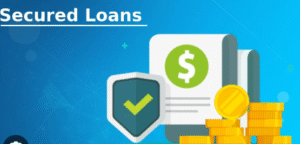
height=”270″ /> Key Differences Revealed: Unsecured Loans vs. Secured Loans by Maximilian
Can I pay back the loan?
Key Differences. Please find my credit score here: How desperately do I need the loan? Can I utilise a secured loan for anything? That relates to the kind of secured loan used. The asset being funded must be something for which mortgages and auto loans fit. Usually, though, secured personal loans supported by investments or savings can be used for any kind of purpose.
Should I fail on an unsecured loan, what results? You won’t lose any particular asset personally; your credit score will suffer, and the lender may pursue legal action to recoup the money.
Which loan gets approved more quickly?
Generally speaking, unsecured loans are approved and processed faster, often with same-day approvals. Later on, might I change from a secured to an unsecured loan? Once your credit starts to improve, you could be able to convert a secured loan into an unsecured one, but this will rely on the lender and the kind of loan.
For debt consolidation, which kind is best? Consolidating debt is usually done using unsecured personal loans, particularly if you have strong credit and wish to streamline repayments without running danger to assets.
Final thought
Deciding which of a secured or unsecured loan to use is not always simple. Every has advantages and disadvantages; the appropriate decision mostly relies on your risk tolerance, financial status, and aspirations.
Better terms like reduced interest rates and greater borrowing limits come from secured loans. The drawback is, though, should things go south, you could lose your asset. While unsecured loans can have stricter eligibility standards and harsher rates, they do not compromise your property.
In the end, always look around for several loan offers, closely review the fine print, and, if unsure, think about consulting a financial expert. Getting the correct loan may make all the difference between reasonable debt and unmanageable obligations.
Conclusion
Before incurring any debt, one must first be aware of the main variations between secured and unsecured loans. Although they come with more personal risk, secured loans, supported by collateral, usually have reduced interest and larger limitations. Though they often need a better financial profile and have higher interest rates, unsecured loans offer more flexibility and faster access.
When deciding between the two, weigh your financial situation, current assets, and long-term loan capacity. It all boils down to which fits your comfort level and financial situation; neither one is intrinsically better. Making a wise decision can not only safeguard your money but also help you to maintain your long-term financial situation.
FQS
1. What is the largest risk associated with a secured loan?
The main risk is perhaps losing your collateral. Should you be unable to pay back the loan, the lender may confiscate your asset, such as your car or house.
2. Can I obtain a bad credit secured loan?
Indeed, since secured loans are backed by collateral, lenders are typically more willing to issue them for those with bad credit.
3. Do unsecured loans call for a good credit score?
Generally speaking, yes. Given no collateral, lenders mostly rely on your credit score to determine risk.
4. Is a mortgage a secured or unsecured loan?
Key DifferencesSince the house you are purchasing backs up a mortgage, it is a classic example of a secured loan.
5. Do student loans come secured or unsecured?
Although government-backed student loans are handled differently because of particular repayment policies, most student loans are unsecured.
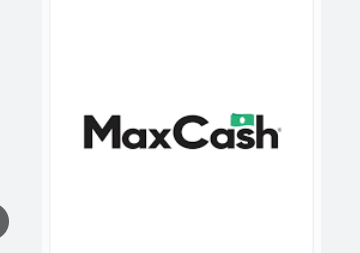
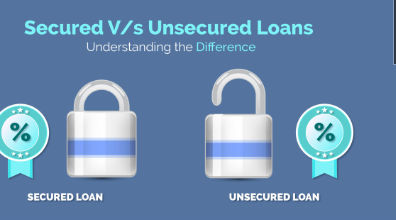
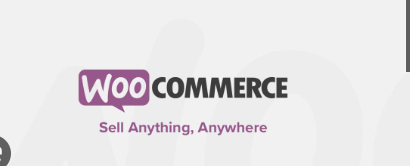

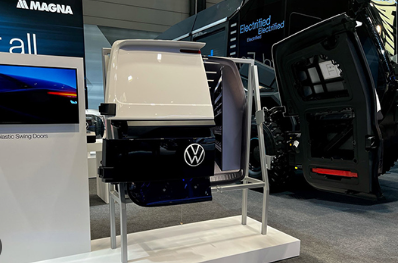

Leave a Reply